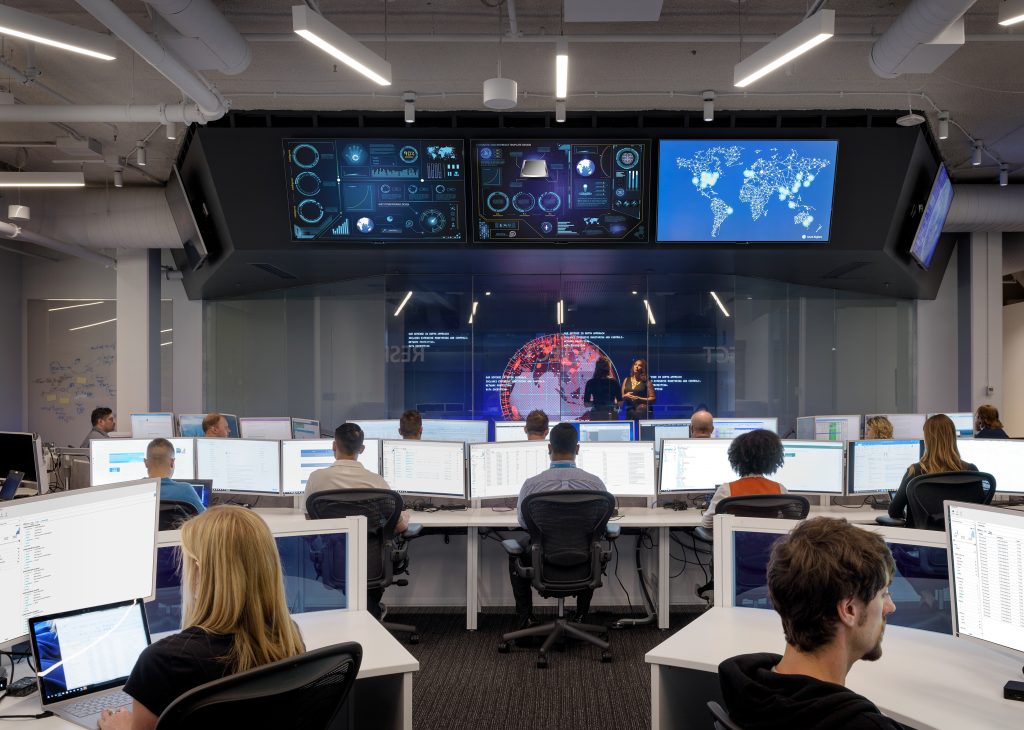Cybersecurity continues to pose a significant threat to governments, businesses and individuals worldwide. From supply chain disruptions to ransomware attacks, cybercriminals have become increasingly sophisticated and the threat landscape more diverse. These cybersecurity challenges are compounded by a shortage of manpower; there are simply not enough people with the cybersecurity skills needed to fill open jobs.
This is a global problem. By 2025, it will create 3.5 million cybersecurity jobs worldwide, representing a 350% increase over an eight-year period, according to Cybersecurity Ventures. today, a third goes unfilled. We work with community colleagues to help close the gap and increase diversity in the profession. Today, Microsoft announced the expansion of our cybersecurity capability campaign to an additional 23 countries.
The expansion will see new targeted investments in the following countries: Australia, Belgium, Brazil, Canada, Colombia, Denmark, France, Germany, India, Ireland, Israel, Italy, Japan, Korea, Mexico, New Zealand, Norway, Poland, Romania , South Africa, Sweden, Switzerland and the United Kingdom. These countries have an increased cyber threat risk, coupled with a significant gap in their cybersecurity workforce both in terms of the number of professionals employed in cybersecurity vs demand, as well as a lack of diversity.
Based on our research, we have created a Power BI to shed light on cyber security capabilities in these countries:
As with our U.S. program, one of our goals is to ensure that traditionally excluded populations have opportunities to recruit cybersecurity workers, including women. The global cybersecurity workforce is in dire need of diversity: in the countries where we are expanding our campaign, on average only 17% of cybersecurity workers are female. Leaving women out of cybersecurity workforce leaves talent on the table and will only hurt our ability to close the skills gap. This is not just about equality, there is also a business case: gender-diverse business performance better.
Global scale, meet local needs
To address the capabilities of cybersecurity capabilities, there are some basic elements that are needed worldwide:
First, we need to better understand the skills gap and share best practices. As a wider community, we can not solve a problem that we do not fully understand, so Microsoft is launching a new partnership with the Organization for Economic Co-operation and Development (OECD) to not only develop a detailed study on the skills gap. in selected countries, but also to improve the ability of cybersecurity workers to grow through postsecondary education and training. Together with the OECD, we will make this data publicly available for both politicians and businesses to make more informed decisions, and we will call on member countries to share learning and best practices.
Second, anyone interested in pursuing a career in cybersecurity – whether students, career-changing people, or current IT professionals – needs access to industry-leading skills content so that they can train for these critical roles. Therefore, as part of this expansion, we are offering free training for cybersecurity paths through our LinkedIn learning platform, including courses such as “The Cybersecurity Threat Landscape” and “Cybersecurity Foundations.” Additionally, students looking for more technical skills can access free security courses through our Microsoft Learn platform with 47 learning paths and hundreds of hours of content.
Third, educational institutions need more teachers who are capable and equipped to teach cybersecurity students, which is why we partner with educational institutions to provide curriculum. Through our Microsoft Learn for Educators program, we provide all higher education institutions with access to free curriculum, educator training, and teaching staff tools, including courses such as Microsoft Security, Compliance and Identity Fundamentals, Microsoft Azure Security Technologies certification, and more. We also provide faculty at all of these institutions with access to additional resources including free practice and certification exams, curriculum integration support and more. To date, more than 1,000 higher education institutions around the world have joined the program.
Fourthly, we must offer support to various and underserved jobseekers. That’s why we partner with Ecole 42, a tuition-free global IT training program with a mission to educate the next generation of software engineers to make Microsoft cybersecurity content available to its 15,000 students worldwide, with peer-to-peer learning and gamification . We are also launching a partnership with Women in Cybersecurity, a nonprofit with the mission to recruit, retain and promote women in cybersecurity to expand their student chapters in these 23 countries, and assist the retention and advancement of women in the cybersecurity sector. Cybersecurity to promote them.
Finally, the cybersecurity capability gap is not solved with a single size-fits-all solution. In each of the countries where we launch our campaign, Microsoft will work with local educational institutes, nonprofits, governments and businesses to develop a cybersecurity capability program tailored to the unique needs of their own market – anchored in cybersecurity capability data Gaps in every country. That said, we are building the framework based on a common set of needs, and ensuring that we expand access to tools that are available to us today.
Global Expansion
Work is already in progress. Here are just a few examples, and we’ll share more details about the countries’ plans in the coming weeks and months:
In Colombia, the government has launched an initiative to increase its national cybersecurity capacity, including the implementation of professional training programs in areas such as digital security, information security, cybersecurity and critical infrastructure. Our cybersecurity skills in Colombia will support this effort, helping people to acquire the cybersecurity and digital skills needed for on-demand jobs. This is why we are working with the Servicio Nacional de Aprendizaje (SENA), a Colombian public institution providing free vocational training to millions of Colombians, the Universidad de los Andes, a large private university in Colombia, and local non-governmental organizations, to “train the” Coaches’ program for more than 68,000 Colombians, including 20,000 women, to equip them with the skills needed to fill the many open cybersecurity jobs.
In India, we are building our existing CyberShikshaa program that will help break the gender division in the cybersecurity field. Since 2018, we have been helping young women with technical training in cybersecurity with mentoring from industry experts, particularly from women leaders in the field, followed by job placement assistance with leading companies. By 2025, the cybersecurity sector in India will have an estimated 1.5 million jobs. This represents a 42% talent shortage, even though cybersecurity job growth is projected to grow by 32% by 2028, according to the Labor Bureau of India. The demand is there, but more needs to be done to reach it; Most higher education and technical institutes do not offer cybersecurity courses.
That’s why we’ve also partnered with the ICT Academy, a nonprofit partner in India, to develop cybersecurity training programs for educators and college students at 100 institutions in five states, with an emphasis on rural colleges. Through this initiative, CyberShikshaa for Educators, we will help more faculties become cybersecurity trainers, and then provide students with cybersecurity training and job placement assistance to help them find new careers. In the first phase, we aim to train around 6,000 students and will then work with our partner network to connect students to job opportunities and internships.
A look at our US progress – and a look at the future
In the five months since we announced our US cybersecurity skills for campaign, we are making progress. Today, we work with 135 U.S. community colleges that provide access to free curriculum, educator training, and tools for teachers. We share cybersecurity best practices with schools through the American Association of Community Colleges, the first of three cohorts we offer scholarships to fund technical assistance to accelerate their cybersecurity programs. Finally, we provide scholarships to students seeking a diploma or certification in a cybersecurity field. We will learn a lot and will share more in the coming months.
The number of cybercrime attacks around the world is increasing every day, increasing in complexity as cybercriminals continue to escalate their activities. People will be affected no matter where they live. It is critical that we invest in cybersecurity workforce to ensure that there are enough people with the skills needed to prevent these attacks and to protect the digital ecosystem to keep organizations safe and people safe.
Tags: Cybersecurity, Diversity, Education


Add Comment